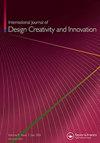通过设计实现商业模式创新:对设计在商业模式创新中的作用的回顾
IF 2.5
Q4 ENGINEERING, MANUFACTURING
International Journal of Design Creativity and Innovation
Pub Date : 2020-01-31
DOI:10.1080/21650349.2020.1717997
引用次数: 8
摘要
近年来,设计研究越来越关注其在商业模式和创新空间中的应用。尽管这种情况有所增加,但围绕设计在促进商业模式创新成果方面的贡献却很少明确。通过文献综述来回答这个问题:设计如何促进商业模式创新成果?我们回顾了316篇以设计和商业模式创新(BMI)为重点的论文,确定了设计和BMI的五个类别:功能设计、基于结果的设计、作为方法论的设计、设计-逻辑导向和非设计。对这316篇论文的反思也强调了在使用设计方法来实现BMI的论文中缺乏可重复性和标准化。这表明需要开发一种清晰、可复制的设计方法来实现BMI结果,以便研究领域能够建立一致和严格的证据基础。因此,我们确定了四种元原型,作为建立设计对BMI结果贡献的一致证据体的第一步。该流程描述了设计在BMI流程中的作用,将抽象的(通常是外部的)概念与有形的替代商业模式联系起来——所有这些都是为了更好地服务于最终用户需求,并为从业者提供可复制的、透明的设计和BMI方法。本文章由计算机程序翻译,如有差异,请以英文原文为准。
Business model innovation by design: a review of design’s role in business model innovation
ABSTRACT In recent years, design research has increasingly focused on its use in the business model and innovation space. Despite this increased, little clarity exists surrounding the contribution of design in facilitating business model innovation outcomes. A literature review was conducted to answer the question: how does design contribute to business model innovation outcomes? 316 design and business model innovation (BMI) focused papers were reviewed, identifying five categories of design and BMI: functional design, outcome-based design, design as a methodology, design-logic orientation, and non-design. Reflection upon these 316 papers also highlighted a lack of repeatability and standardization amongst papers using design approaches to achieve BMI. This suggested a need to develop a clear, replicable design approach to achieving BMI outcomes in order to allow for the research field to build a consistent and rigorous evidence-base. Therefore, four meta-archetypes were identified for use as a first step toward building a consistent body of evidence for the contribution of design to BMI outcomes. The process describes the role of design in BMI processes, linking abstract and often external concepts, to tangible alternative business models – all in pursuit of better serving end-user needs and providing practitioners with replicable, transparent approaches to design and BMI.
求助全文
通过发布文献求助,成功后即可免费获取论文全文。
去求助
来源期刊

International Journal of Design Creativity and Innovation
ENGINEERING, MANUFACTURING-
CiteScore
3.80
自引率
27.80%
发文量
15
期刊介绍:
The International Journal of Design Creativity and Innovation is an international publication that provides a forum for discussing the nature and potential of creativity and innovation in design from both theoretical and practical perspectives. Design creativity and innovation is truly an interdisciplinary academic research field that will interest and stimulate researchers of engineering design, industrial design, architecture, art, and similar areas. The journal aims to not only promote existing research disciplines but also pioneer a new one that lies in the intermediate area between the domains of systems engineering, information technology, computer science, social science, artificial intelligence, cognitive science, psychology, philosophy, linguistics, and related fields. The journal covers, but is not restricted to, the following topics: ·Theories on Design Creativity and Innovation ·Cognition of Design Creativity ·Innovative Process ·Inventive Process ·Analogical Reasoning for Design Creativity and Innovation ·Design Synthesis ·Method and Tools for Design Creativity and Innovation ·Representation of Design Creativity and Innovation ·Education for Design Creativity and Innovation ·Concept Generation and Inspiration.
 求助内容:
求助内容: 应助结果提醒方式:
应助结果提醒方式:


